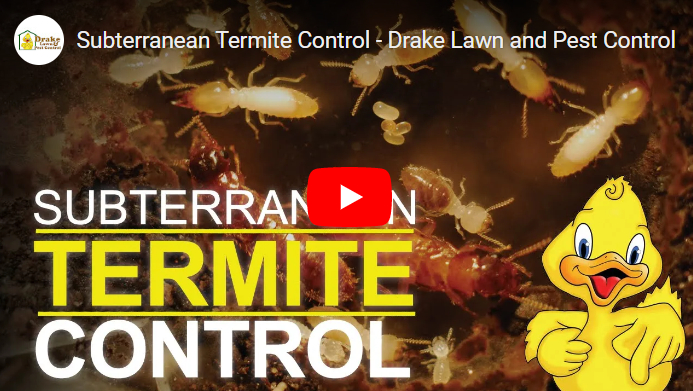Subterranean Termite Control
Each home is unique.
Whether you have a termite problem or just want to protect your home from possible invaders, our integrated A.I.M.® pest protection process works to assess your home, implement solutions, and monitor potential termite problems. We don’t just eliminate termites though! Visit our main page to see all the pests we can remove from your home.
Subterranean Termite Control
No matter how your home is constructed, where it’s located, or how old it is, it could be attacked by subterranean termites. They are a threat across 70 percent of the world and in every part of the United States except Alaska. They cause $5 billion worth of damage each year in the U.S. alone-damage not covered by homeowner’s insurance. And termite damage that can go undetected while it grows for years on end. It’s their ability to so masterfully avoid detection that makes termites so insidiously destructive.
Our termite control is available throughout Orlando, and surrounding communities.
Formosan and Asian Termites are Here in Central Florida
What is a Formosan or Asian Termite?
They are a species of Subterranean Termite, different from our native Eastern Subterranean Termite here in Florida, known as super termites. The non-native Formosan and Asian species arrive fast, in huge numbers, and hit hard. A typical colony can host several million members traveling underground, burrowing up through buildings and munching through wood.
Formosan and Asian Termites are becoming more prevalent in Central Florida. Drake has identified Formosans in several homes during recent years, but this year has been the most active. The amount of damage they can do is quite remarkable.
Here is more information on Formosan and Asian Subterranean Termites from the University of Florida:

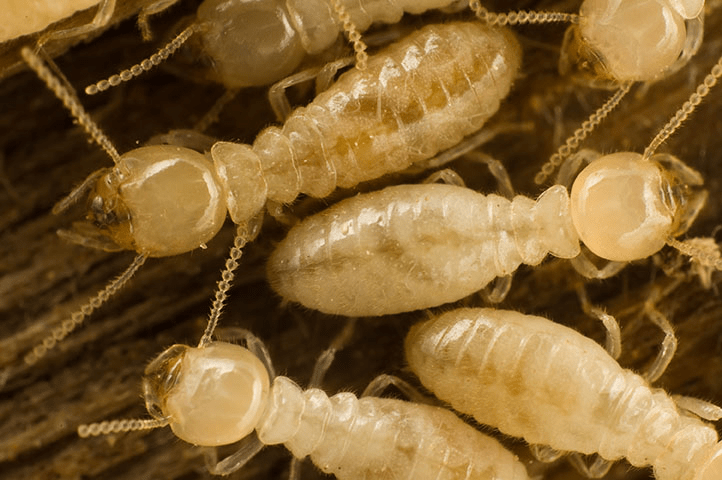
Worker
Worker termites search out and collect food for the termite colony. Termite workers are also responsible for building and maintaining termite mud tubes and nests. They feed on cellulose, which is an essential component found in wood and grass. In nature, they’re helpful in the breakdown of dead and decaying materials. However, when worker termites seek to eat the wood in your home, they create devastating problems.
Swarmer
A subterranean termite infestation begins when warm temperatures and heavy rainfall trigger an established colony to send out a swarm of winged termites to start a new colony, which is sometimes your home. Swarms consist of winged reproductive males and females. Winged, reproductive termites are frequently mistaken for flying ants, but are smaller than ants and have straight, rather than bent, antennae. After mating, swarmer termites land and shed their wings. These wings in areas, such as window sills, are a sign of an infestation.
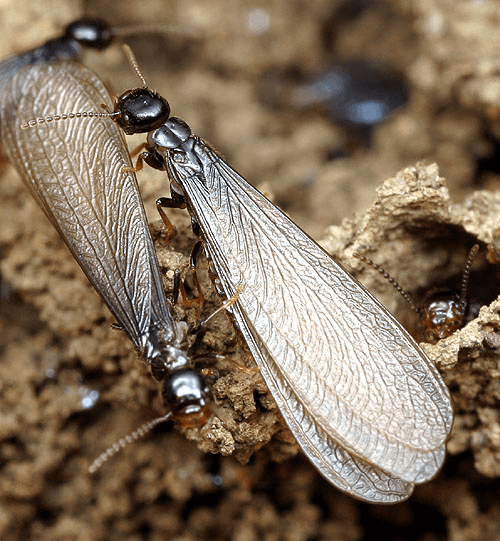
Signs of Subterranean Termite Activity and Damage
Subterranean termites dwell underground and have an amazing ability to gain access into your home undetected, sometimes for years. Look for these signs to help identify whether or not you may have a termite infestation.
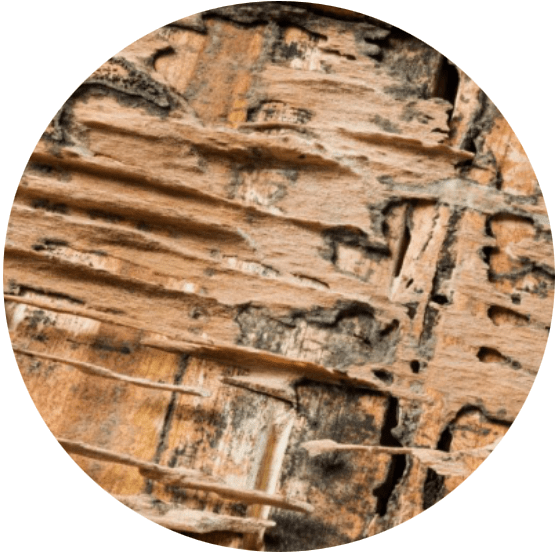
Structural Damage
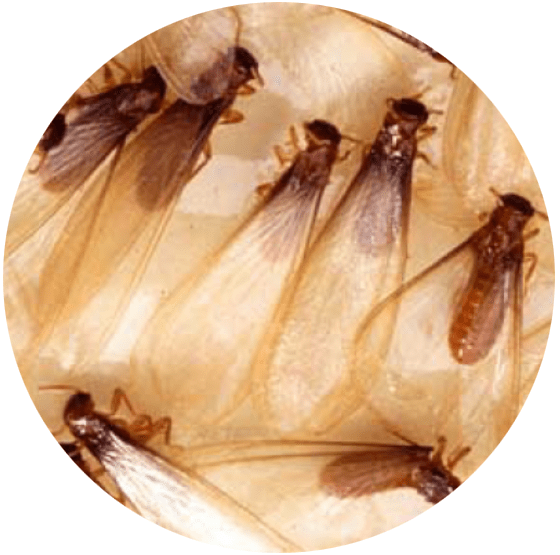
Swarmers
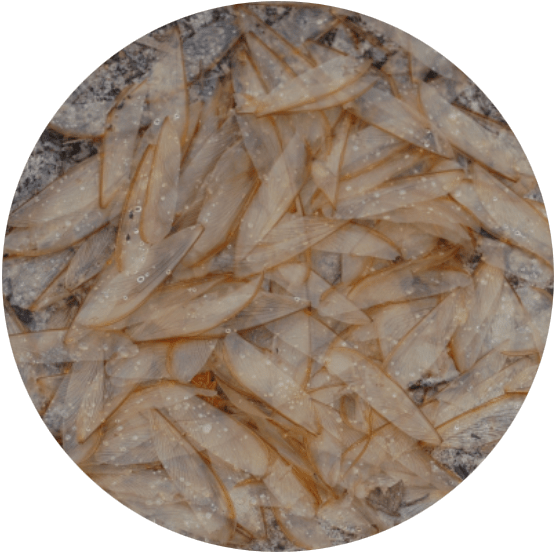
Discarded Wings
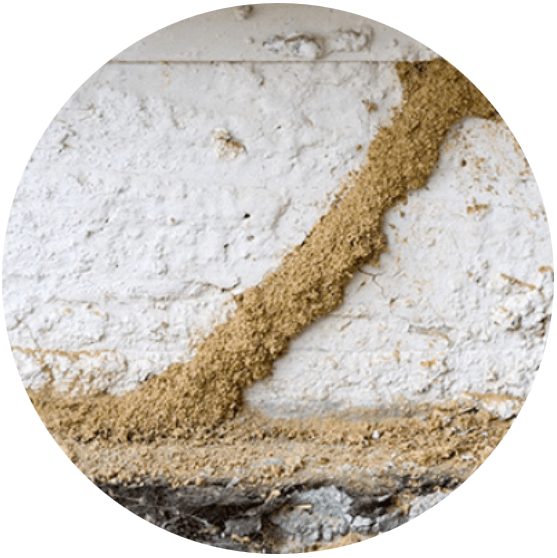
Mud Tubes
How Termites Get Into Your Home
In their search for food (wood/cellulose) and moisture, subterranean termites will squeeze through cracks as narrow as 1/32 of an inch to enter your home! Expansion joints, foundation cracks, tiny gaps around plumbing, and service entries are all potential entry points. And once they’re in, undetected termites can mean untold damage.
Unlike subterranean termites, drywood termites do not require contact with the soil in order to live. Consequently, they can enter your home on any floor or through your attic, rather than through cracks and gaps near your home’s foundation.
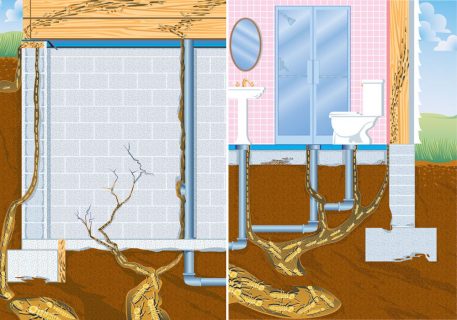
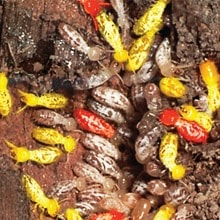
How a Termidor® Termite Treatment Works
To control subterranean termites, a liquid Termidor® termiticide/insecticide termite treatment is applied with precision along the foundation walls or exterior perimeter of your home. The treatment uses time-tested application methods at very low rates. It is virtually odor free and won’t cause any disruption to your family’s normal routines.
Termidor® binds tightly to the soil to create the “Termidor Zone.” Since this protective termite treatment zone is undetectable to termites, termites can’t avoid it and will not try to find a way around it (as they can with repellent termite treatments).
To control drywood termites, your pest professional may apply Termidor® DRY Termiticide directly into termite galleries to treat drywood termites and termites in structures or objects not connected to your home. Unlike liquid applications, Termidor® DRY does not add moisture to wood.
Termidor® Kills and Controls Termites Several Ways
When termites eat Termidor® treated material, they will die. But Termidor® doesn’t stop there. It kills termites by contact as well. And since termites can’t detect its presence, termites directly ingest and contact Termidor® as they go about their normal routines.
The Unique Termidor® Transfer Effect™
Whenever a termite touches Termidor®, it can become a “carrier,” transferring Termidor® to other termites it contacts. Secondary carriers continue transferring Termidor® to other termites they contact, spreading it like a virus throughout the colony. This unique “Transfer Effect™” is one of the reasons no other termite treatment can control termites like Termidor®.
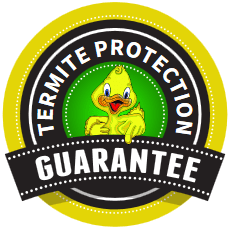
$1 Million Lifetime Termite Protection
Drake will provide protection for the life of your home, including transfer of ownership, against Subterranean Termites. Drake will also retreat your home every 10 years at no additional cost above and beyond your renewal fee.
*Ask Your Technician For Details
Termidor Videos

